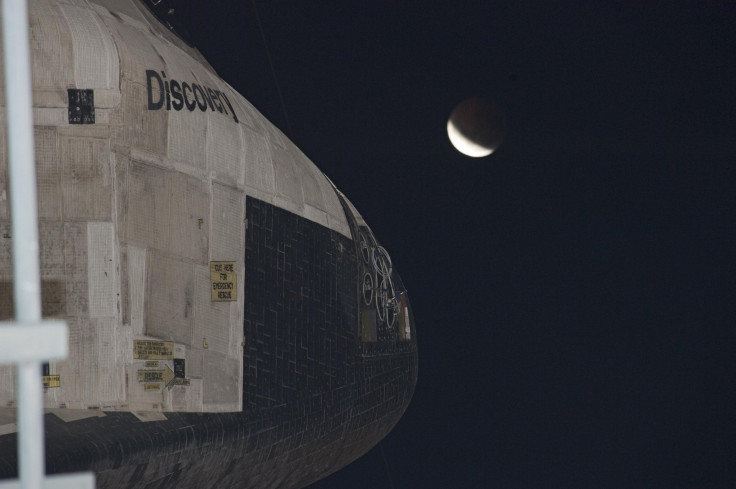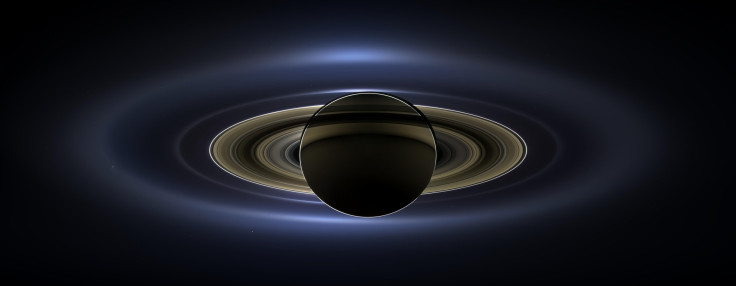NASA’s 5 Heavenly Eclipse Photos: The Sun And Moon In Shadows

Although the Earth and the moon are in constant motion, it is still not incredibly common for our planet, the moon and the sun to be in perfect alignment. That makes it a special occasion when the moon passes between us and the sun, temporarily blocking out its brilliant light, or when the Earth passes between the sun and the moon, throwing our lunar friend into darkness.
But apart from the stunning visual, an eclipse has scientific value: NASA says seeing the Earth’s circular shadow during a lunar eclipse was part of the evidence that led to the modern understanding that our planet was round instead of flat. And scientists can still learn more from eclipses, such as when they view the sun’s outermost layer while the moon blocks its glare from Earth-based instruments, or when they measure how much the moon’s surface temperature drops while Earth temporarily blocks sunlight, as a method of determining the moon’s composition.
Despite the scientific usefulness of a solar or lunar eclipse, it still is a sight to behold. Here are a few of the most amazing ones NASA has captured over the years.
Most super eclipse

A lunar eclipse on Sept. 27, 2015, was perhaps the closest thing to destiny the moon ever experiences — it was like the stars aligned to make it happen. The moon was at its closest point to Earth, the part of its orbit called perigee that makes the full moon appear much larger and gives it the name “supermoon.” At the same time, it passed directly behind our planet, causing a total lunar eclipse with a reddish hue to it. Astronomy buffs around the world were out taking photos that night, including the one who snapped this NASA photo of the moon — known during this event as the super blood moon because of its size and color. Such a concurrence of events has only happened a handful of times since the early 1900s and won’t happen again until 2033.
To make this super blood moon even more special, it was also a harvest moon, which is the term given to the full moon closest to the autumnal equinox in late September.
In case this monumental shot is not enough for you, NASA has a small collection of staff photos from that night on Flickr.
Read: Special Lava Makes This Part of the Moon Look Way Younger
The space between

In November 1969, just months after the first humans landed on the moon, another space mission traveled there and was on its way back home when the Earth passed in front of the sun. It created an interesting sight: a space eclipse only they could see. The Apollo 12 astronauts — Pete Conrad, Dick Gordon and Alan Bean — captured it with a 16mm motion picture camera, NASA said.
Game of shadows

The special solar eclipse the crew of Apollo 12 got was just the first of the eclipse shows astronauts would catch. In December 2002, the ones floating in the International Space Station in orbit around the Earth spotted a shadow on top of some cloud cover — a shadow cast by the moon. NASA said the ISS was sweeping over the Indian Ocean at the time the photo was taken, with three crewmembers from Expedition 6 aboard. For anyone standing with that shadow, it would look as though the sun were being blocked by the moon.
Read: The Moon Is Damaged in the Same Way You Get a Sunburn
Ring around the solar

The Earth and the moon are not the only bodies that can block sunlight. A few years ago, NASA’s Cassini spacecraft sent back a photo from the outer solar system of Saturn passing between it and the sun, blocking out the light source and giving the planet’s rings a gorgeous glow. Several of Saturn’s moons and even the Earth are visible in this image although they are quite small and require a trained eye. NASA reported this 2013 eclipse was only the third time a photo of our planet was taken from the outer solar system, and the second time one was taken by Cassini. This one was snapped quite far from Saturn — from end to end, the image represents more than 400,000 miles of outer space.
Discover the moon

The space shuttle Discovery was on a launch pad in Florida in December 2010 when the Earth passed between the moon and the sun and started to obscure the former in shadow. It was the beginning of a total solar eclipse, one that coincided with the winter solstice and was visible from the Americas and northwestern Europe. National Geographic reported it was the first time since 1638 that an eclipse had occurred during the winter solstice. The eclipse was also the second of the year after a partial eclipse of the moon in June 2010.
© Copyright IBTimes 2025. All rights reserved.





















